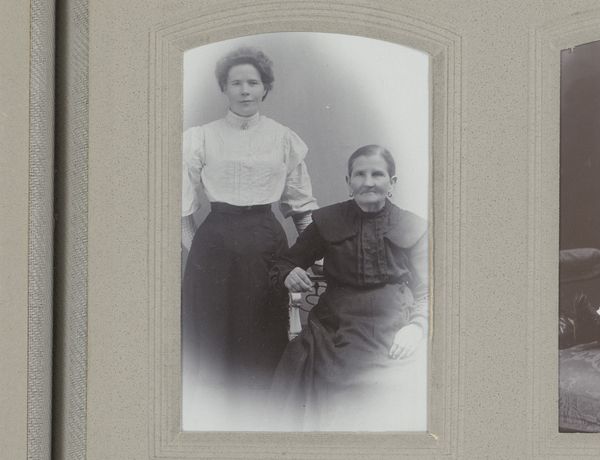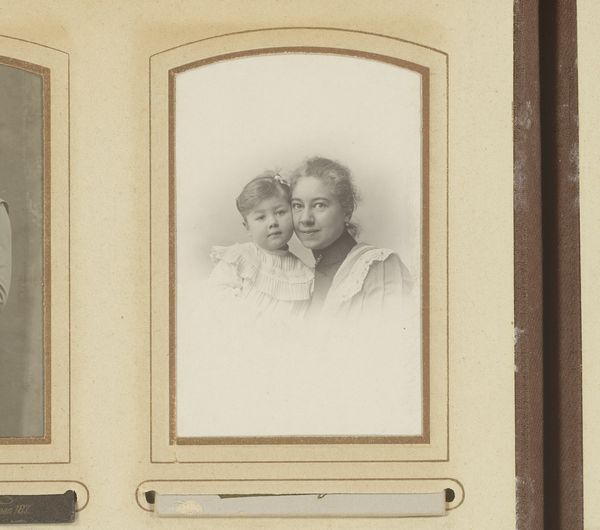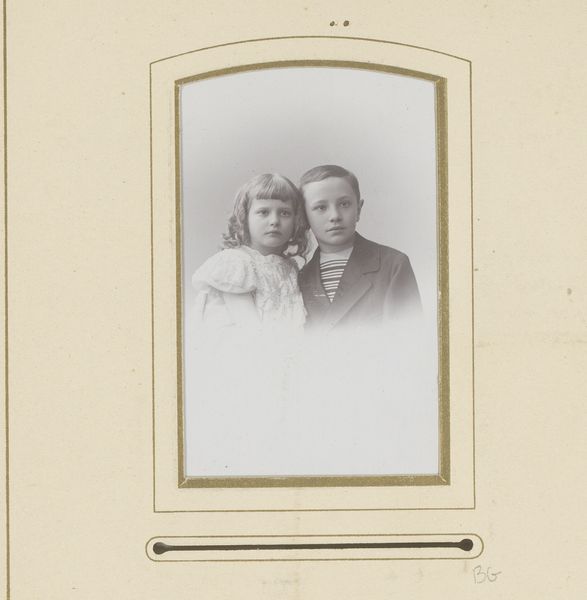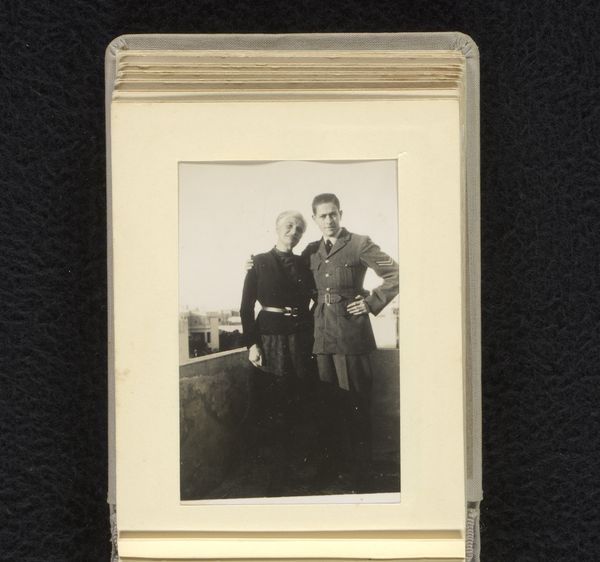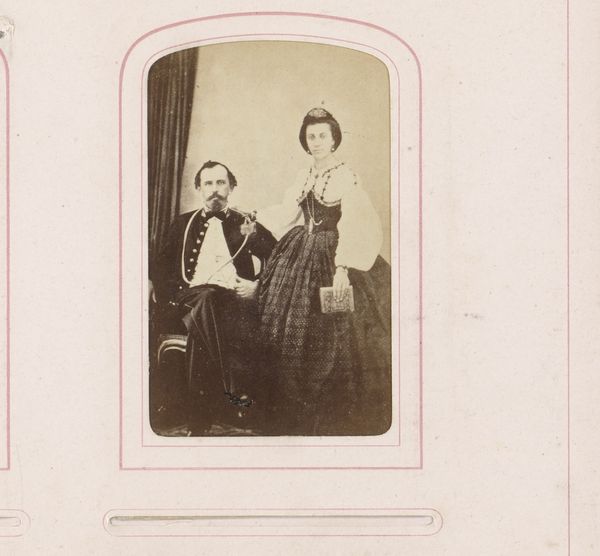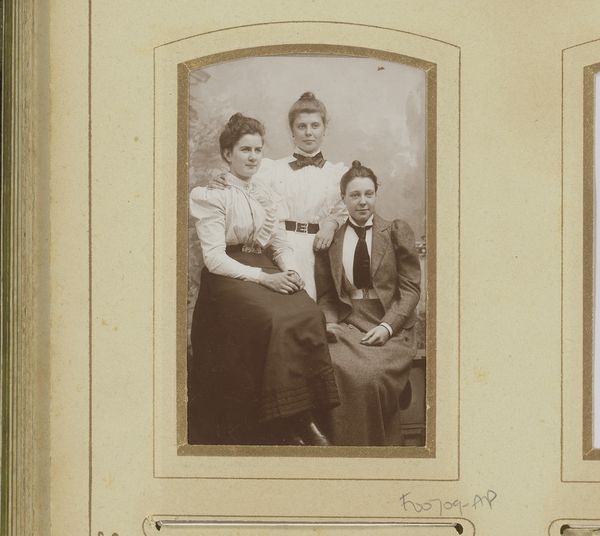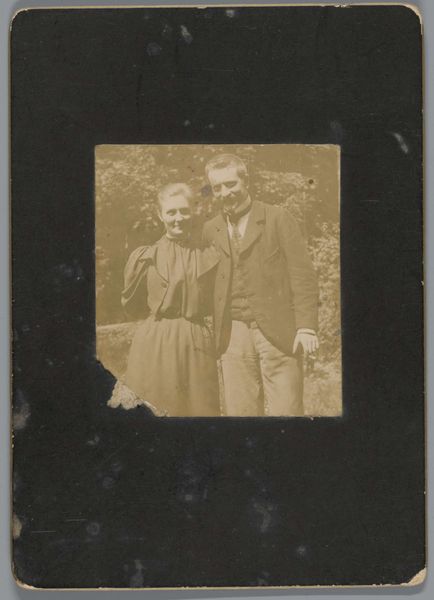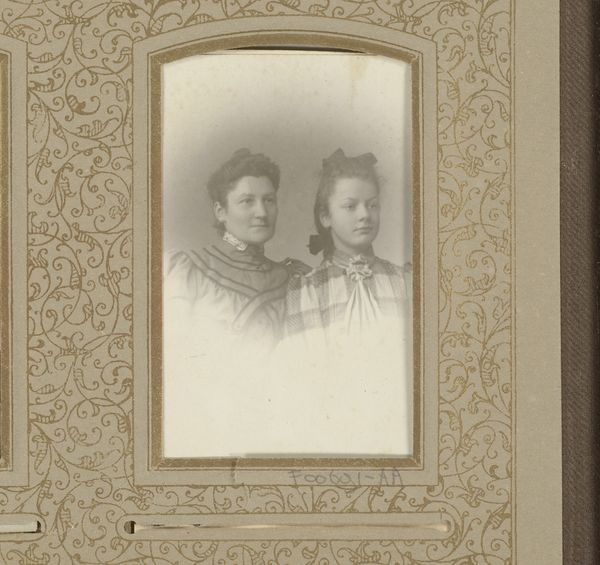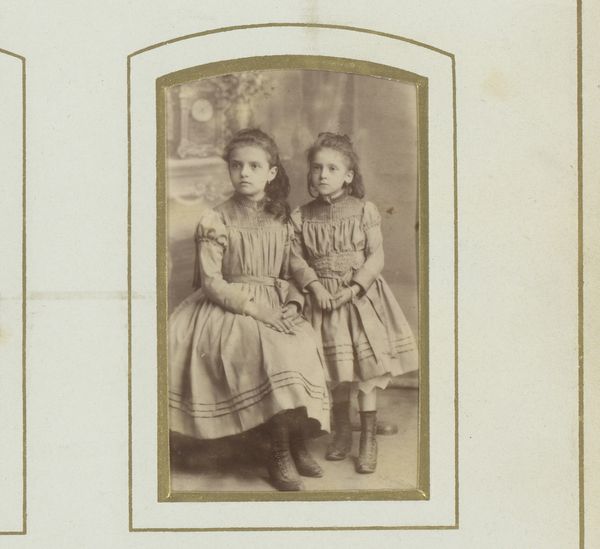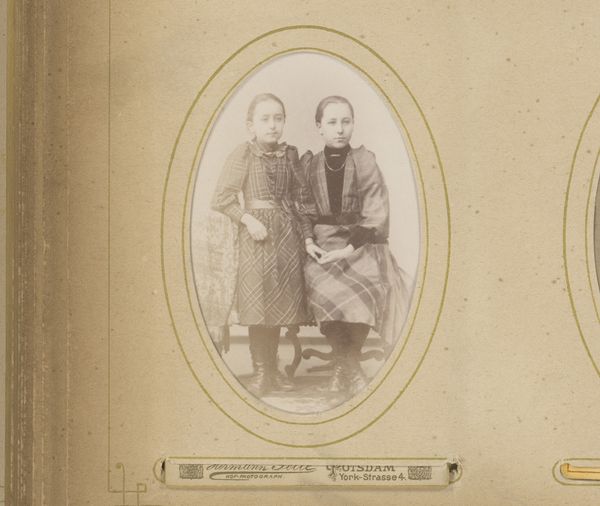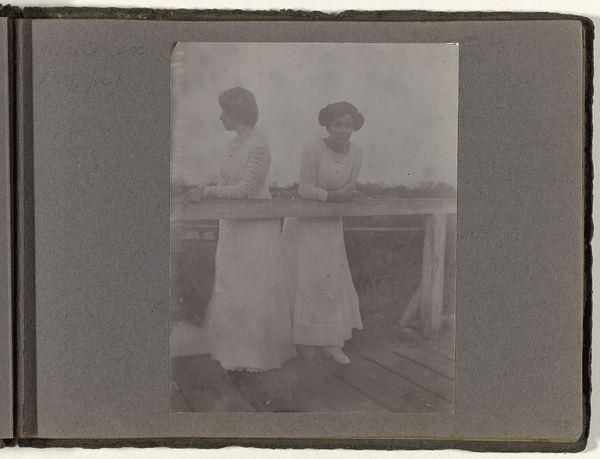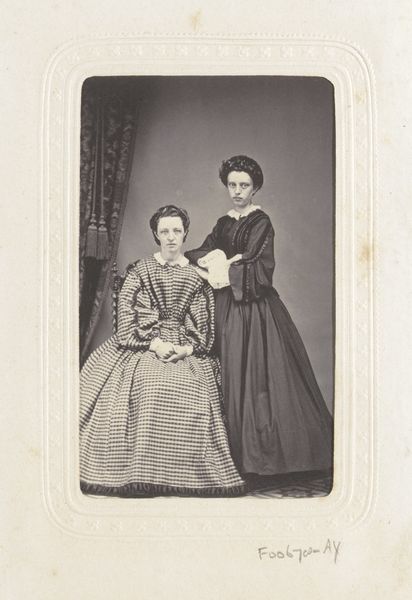
photography
#
portrait
#
mother
#
photography
#
group-portraits
#
genre-painting
#
realism
Dimensions: height 83 mm, width 51 mm
Copyright: Rijks Museum: Open Domain
Editor: So this is "Portret van een zittende vrouw en een staande jongen", or "Portrait of a Seated Woman and a Standing Boy," a photograph dating from between 1894 and 1920, artist unlisted. I find the relationship between mother and son quite stoic, but maybe that’s just the style of photography back then. What stands out to you? Curator: It’s interesting you mention stoicism. These portraits, often commissioned by middle-class families, served specific social functions. They weren’t necessarily about capturing candid emotions, but more about projecting a particular image of respectability and family unity. Note the deliberate posing and the formal attire. How do you think these portraits contributed to shaping public perceptions of family and motherhood? Editor: So you're saying they're not just personal mementos but also tools of social representation? Like constructing a public face? Curator: Exactly! These weren't snapshots; they were carefully constructed images consumed within a broader social and political context. Consider the rise of photography as a relatively accessible medium during this period. Who had access? Whose stories were being told and, importantly, *how* were they being told? The choice of clothing, backdrop, even the posture—all contribute to a specific narrative. Do you think that the kind of narratives they wanted to share differ from current times? Editor: Definitely. Now people want authenticity or some idealized version of it. But this seems to promote stability. I had no idea that formal photographs can reveal so much! Curator: Indeed! By examining them through a historical lens, we unveil the intricate ways in which art interacts with social norms, power dynamics, and the ongoing construction of identity. Editor: I’ll never look at old family photos the same way again.
Comments
No comments
Be the first to comment and join the conversation on the ultimate creative platform.
